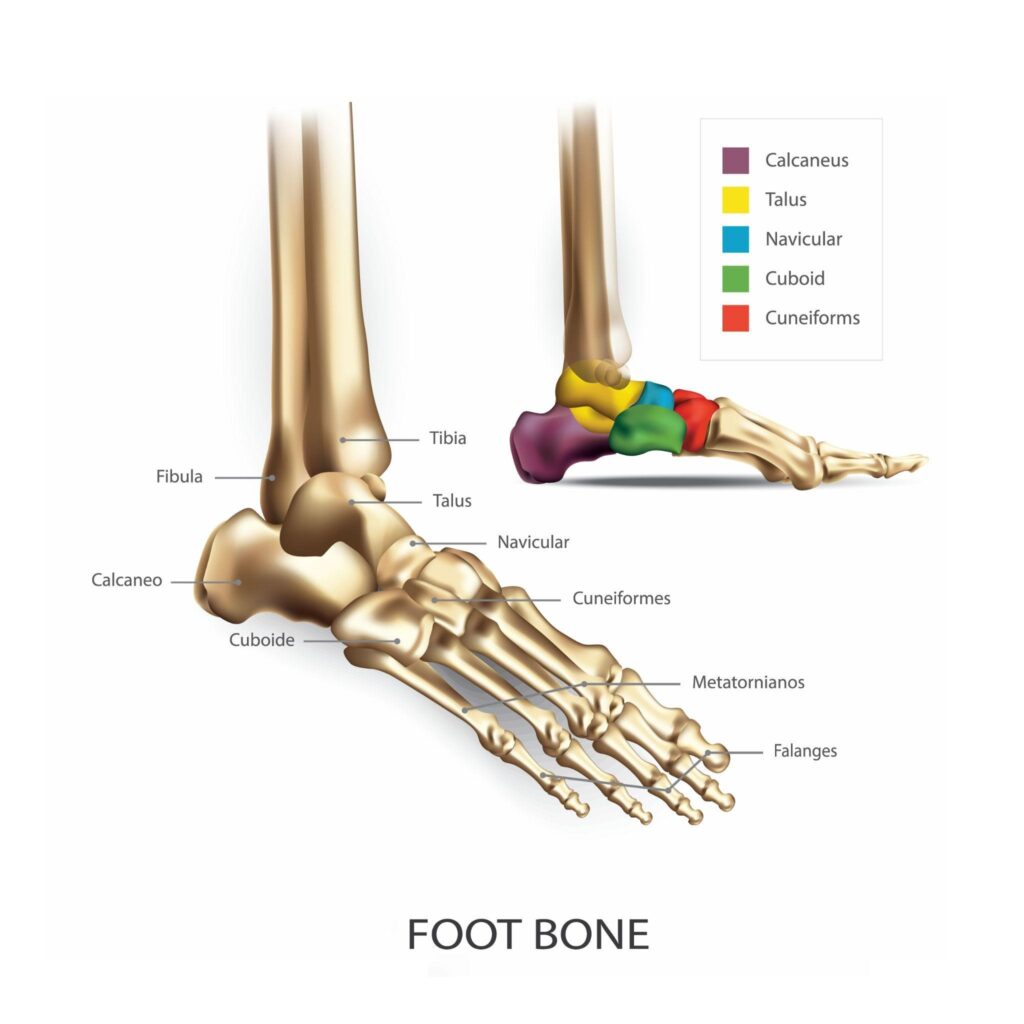- +91 782-7080-348
- contact@neemtreehealthcare.com
- A290 2nd Floor, Defence Colony ND-110024
- +91 782-7080-348
- contact@neemtreehealthcare.com
- A290 2nd Floor, Defence Colony ND-110024
Latest post
Post Categories
- No categories
15+
Centres in 7 States/UTs
50+
Expert Surgeons
15000+
JoinT Replacements
70,000+
Happy Patients
Foot And Ankle Reconstruction
Restore mobility and ease pain with expert foot and ankle reconstruction.
Foot And Ankle Reconstruction
Restore mobility and ease pain with expert foot and ankle reconstruction.
15+
Centres in 7 States/UTs
50+
Expert Surgeons
2000+
Joints Replacements
60000+
Happy Patient
What is foot and ankle reconstruction surgery?
Foot and ankle reconstruction is a surgery performed to correct the structures of the foot and ankle, and restore the natural functionality of the foot that has been lost due to foot and ankle injuries.
Why is it done?
The primary objectives of foot and ankle reconstruction are reduction of pain from foot and ankle injuries and restoration of function and appearance.
Reconstructive foot and ankle surgery is performed to correct birth defects, diseases and other foot and ankle injuries and can greatly benefit patients’ medical and aesthetic needs. It is often recommended when conservative treatments fail to resolve the symptoms. It is a good option for permanently treating common foot and ankle injuries.

Who Needs Foot And Ankle Reconstruction Surgery
You can consider foot and ankle reconstruction surgery if you have:
- Acquired foot and ankle conditions, ranging from bunions to plantar fasciitis
- Deformities including hammer toe, claw toe and flat feet
- Bone spurs
- Torn ligaments caused by severe sprains
- Fractured bones
- Foot and Ankle injuries including Achilles tendon tears
Deciding factors for foot and ankle reconstruction surgery
The surgery to be performed depends on several factors such as the :
- Age of the patient
- Type of foot and ankle injuries
- Severity and duration of the symptoms

Types of Foot And Ankle Reconstruction Surgery
ACHILLES TENDON REPAIR: When the thick tendon that connects the back of the heel to the calf muscles is torn, surgery is often necessary to properly reconnect the torn ends back together. The ends of the Achilles tendon may naturally reconnect without surgery, but nonsurgical treatment often results in the injury occurring again and a slower recovery. This is why athletes usually opt for surgery to repair this injury.
FUSION SURGERY: When a joint has extensive damage and is causing chronic pain, fusion surgery may be recommended. The pain is usually caused by bone-on-bone scraping during movement, as the protective tissues and other elements are degraded and are therefore no longer working properly. This type of foot surgery is performed to remove the remaining cartilage and to permanently join (fuse) the adjacent bone tissues together. This is done using plates and screws to enable the natural fusion process, which will prevent the movement that is causing pain and other symptoms.
FOOT FRACTURE SURGERY: While simple foot fractures may heal on their own, complex fractures require surgery. Surgeries to address foot fractures have a high success rate.
METATARSAL SURGERY: Your foot and ankle specialist may recommend metatarsal surgery to repair bunions, rheumatoid arthritis, or another issue that is causing deformity in the foot. The procedure involves cutting the metatarsal bone, repositioning it, and fastening it in place using metal pins, plates, or screws.
MORTON’S NEUROMA SURGERY: Morton’s neuroma is a condition that causes pain in the toes and the ball of the foot where a mass of tissue has grown around a nerve. The surgeon will decompress the nerve or to remove the inflamed nerve altogether, thereby relieving the debilitating, burning pain.
TOE DEFORMITY CORRECTION SURGERY: Severe corns, calluses, bunions, and hammertoes can disfigure the feet. A deformed toe causes pain and discomfort, and it increases your risk of falls and other injury-causing accidents. Surgical treatment can be performed to straighten out and reposition the toes so that you can walk properly without any pain or discomfort.
RECONSTRUCTIVE SURGERY: A foot deformity can affect balance and gait, and this should be addressed with reconstructive surgery. Patients with osteoarthritis, rheumatoid arthritis, or a severe injury may require this type of foot surgery.
Advantages
The main advantages of foot and ankle surgery are:
- Long-lasting pain relief from common foot and ankle injuries
- Better function and mobility
- A greater choice of comfortable footwear improves the appearance of your feet, depending on the procedure.
- Smaller incisions
- Minimal trauma to the surrounding structures
- Shorter recovery time with less post-surgical complications
- Greater range of motion with less postoperative pain
- Decreased muscle atrophy
Causes
- Common foot ailments like bunions or hammertoes
- Postural deformity such as severe flat feet
- Foot and ankle swelling after knee injury
- Pain while walking on hard surfaces
- Problems with standing or other movements of the foot
- Fractures sustained because of accident/trauma
- Athletic injuries like Achilles tendon tears, foot/ankle fractures, ligament injuries and several others
- Plantar fasciitis, a common cause of heel pain
- Heel and bone spurs
- Joint or bone deformities due to arthritis
- Infections
- Tumors and lesions
- Metabolic disease such as diabetes
Anatomy
The foot is divided into three parts:
- The forefoot consists of five toes (phalanges) and five longer bones (metatarsals).
- The midfoot forms the arch and consists of the three cuneiform, cuboid and navicular bones.
- The hindfoot forms the heel and ankle. The calcaneus is the heel bone. The ankle is described below.
The ankle is formed of the talus bone, which supports the tibia (shin bone) and fibula in the leg. The tibiotalar joint (ankle joint) allows the foot to move up and down. The lateral malleolus is the bony protrusion on the outer ankle, formed by the distal end of the fibula. The medial malleolus is the inner ankle bone, formed by the distal end of the tibia.
Cartilage cushions the bones and allows them to glide smoothly over one another. Tendons connect muscles to bone to provide support. The Achilles tendon, which wraps around the heel bone, is the largest and strongest tendon in the body. Bursae, small sacs that contain synovial fluid, help to decrease friction between tendons and bones or skin.
Ligaments connect bones to other bones. The plantar fascia is the longest foot ligament, acting as a shock absorber and supporting the foot arch. Other ligaments include the talo-fibular and calcaneo-fibular ligaments.

Why Choose NeemTree Healthcare?
50+ Specialist Onbaord
40+ Years of Experience
24X7 Medical Assistance
All Govt Panels Accepted
EMI Option Available
Post Discharge Home Care
Medical Visa Assistance
PSUs & TPA Insurances Accepted
NeemTree Healthcare
Your Trustable Orthopedic Solution
- Post-surgery care – We tend to offer fantastic follow-up sessions, including consultations and instructions like dietary tips and physiotherapy to all patients to ensure you have a seamless recovery.
- Home Care including change of dressing, stitch removal and physiotherapy sessions at home.

Our Experienced Doctors
Neemtree Healthcare team of skilled and best hip replacement surgeon Our group of Hip replacement specialists, who are kind and have a lot of experience, which help patients for quick recovery. Neemtree Healthcare is leading health care service provider More Than 35+ Centre’s with More than 40+ Years.











